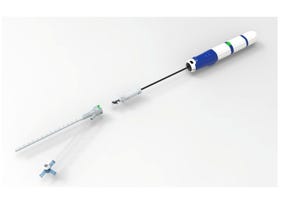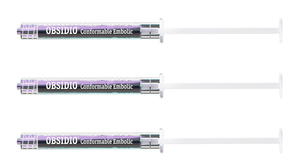Bryce Rutter, Metaphase Design CEO, shares how the company aims to improve patient quality of life through industrial design.
August 27, 2022

Bryce G. Rutter, PhD, founder and CEO of Metaphase Design Group Inc., shares his daily work practices, inspiration from nature, and what makes work in the design of medical devices meaningful in this Q&A.
MD+DI: What made you want to become an industrial designer on the medical side?
Rutter: Of all the different types of products I have designed, I love medical products the most. It’s very rewarding to know that you are helping to improve the quality of healthcare. From helping people live longer independently and with dignity to taming state-of-the-art technologies so they are intuitive, easy-to-use, and seamless extensions of our bodies…now that’s fun stuff!
MD+DI: How long have you been in the industry and when did you first become interested?
Rutter: As early as I can remember I was always fascinated by how things were made. I love tearing products apart and looking at how they are manufactured and how they work. These were the seeds of my career specializing in the design of ergonomic medical devices and systems that work the way people think, feel, and behave. I started my design career in 1980 after graduating with a Master of Industrial Design degree at a Toronto-based industrial design consulting firm designing medical products, then returned to university for my PhD in kinesiology in motor learning specializing in hand function, then started Metaphase in 1991 specializing in high-touch, ergonomically designed medical and consumer products.
MD+DI: How do you maintain a healthy work-life balance?
Rutter: As an owner of a design and human factors consulting agency, it is a challenge. What works for me is to leave work at the office and when I get home, put the mobile devices away because if my smartphone is within arm’s reach, I will go down the rabbit hole in a heartbeat.
MD+DI: What time do you start your day and why that time?
Rutter: I start my day at 7 AM when I naturally wake, have a cup of coffee, spend some time with my wife watching the newsfeed, and get to the office by 9 AM.
MD+DI: Do you have any work mantras or approaches that guide or ground you throughout your day?
Rutter: At Metaphase all of us share one common work mantra, or what we call our Core Values, that guide how our team collaborates with each other and with our clients: Honesty, Respect, Responsive, and No Shortcuts.
MD+DI: What have you learned about design that you did not know before going into the space?
Rutter: I've learned that the same fundamental skills of creativity and design we use in medical product design are pretty handy when applied to everyday living. Design thinking continues to expand my point of view and affords me with an excellent toolbox of techniques for analyzing complex problems which are very common in the med–surgical space.
MD+DI: What motivates you each day, or what helps to motivate your teams daily?
Rutter: The vast majority of all products we work on help bring good design to everyone. Having seen surgeons, nurses, caregivers, and patients use products that we have designed that don't erode their dignity day by day and that are simple and intuitive to use brings great joy and satisfaction to me in my purpose of life.
MD+DI: Do you take inspiration from any source for innovation? If so, what, and how does it inspire you?
Rutter: My biggest source of inspiration comes from nature. Some of the cleverest innovations had their genesis in a plant, bug, or animal. On each project, we commonly look for how the problem we are addressing has been addressed by mother nature herself. These serve as metaphors leading to man-made adaptations of the same thing found in nature.
MD+DI: What are you most excited about in the future of design?
Rutter: I'm really excited about what's going on in robotic surgery and augmented reality. Combined, these shape one of the new frontiers in surgical systems and surgical performance. I'm equally excited about the push to bring self-diagnostics into our homes so we can take proactive care of ourselves.
MD+DI: What is one of the greatest challenges you are seeing in design?
Rutter: As healthcare products and systems become more sophisticated, they also become more complicated and require highly specialized skill sets throughout the new product development process to get it right. One of the biggest challenges in NPD is staffing and running these complex high-fidelity teams…but that is also what makes my job the coolest on the planet!
About the Author(s)
You May Also Like


